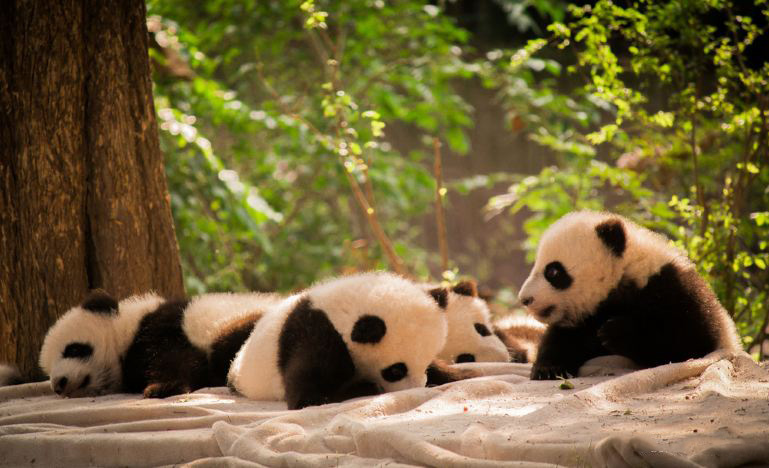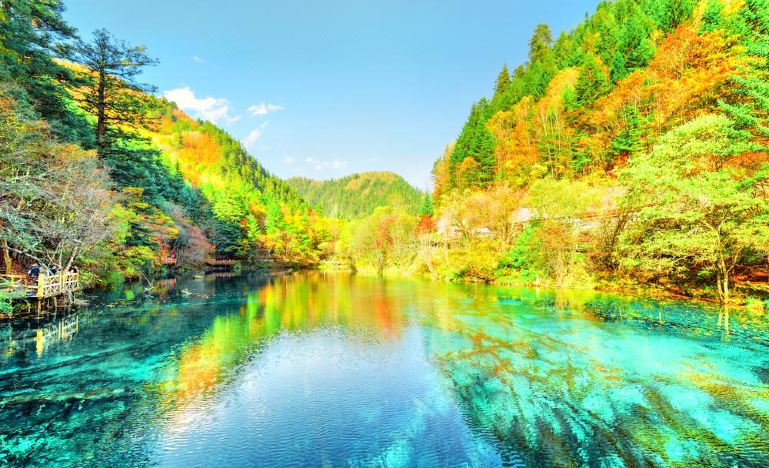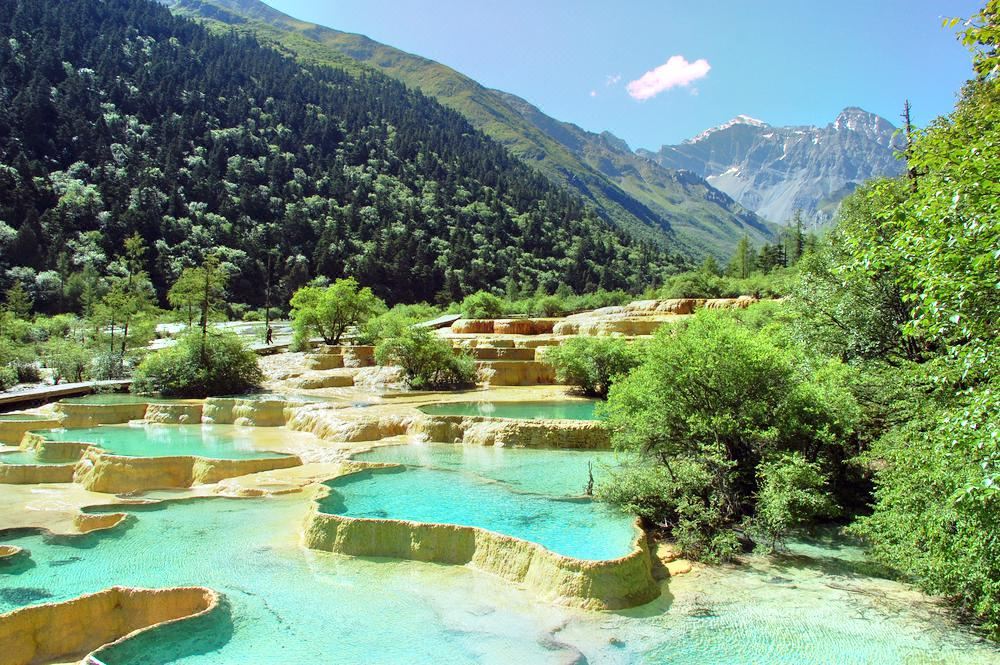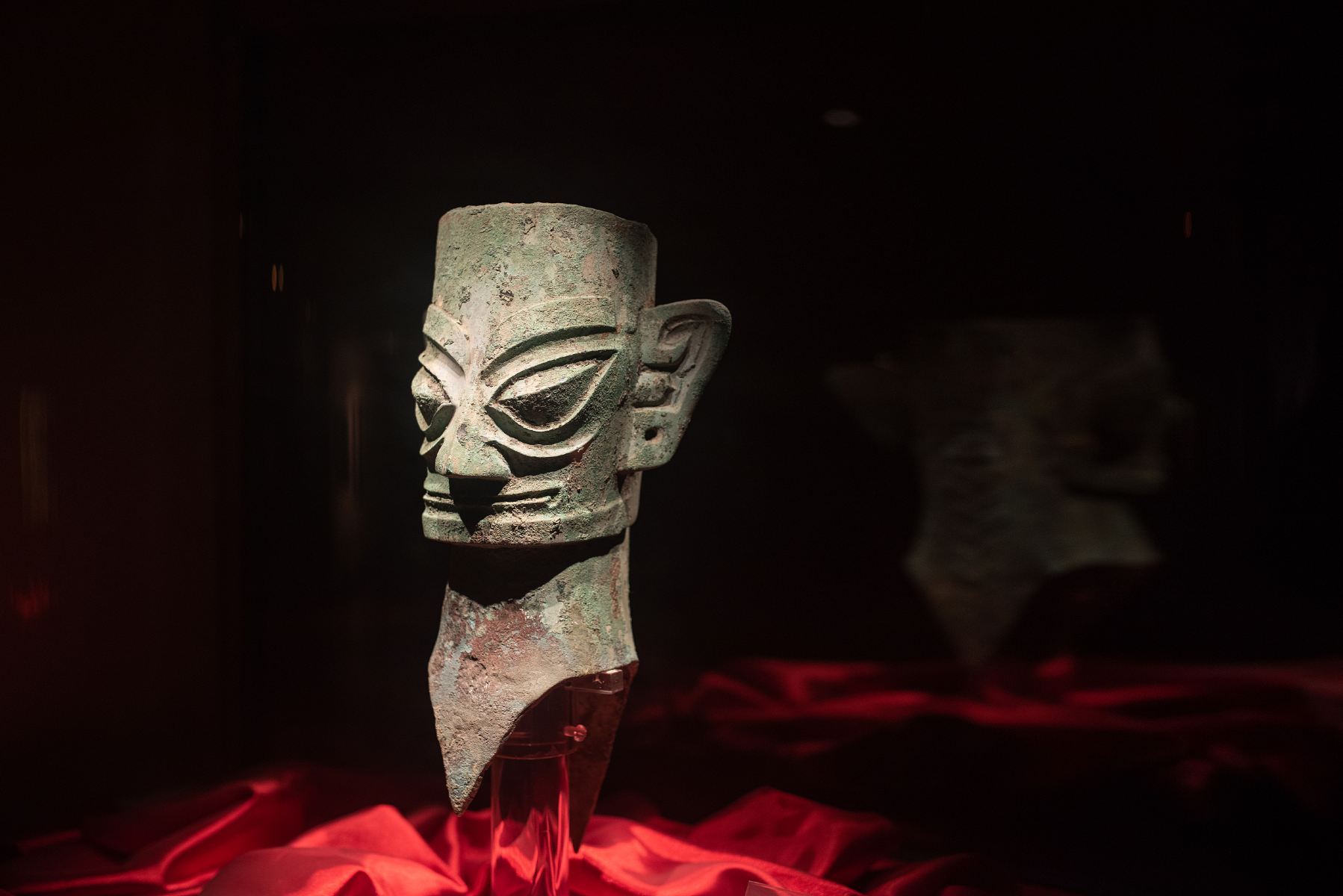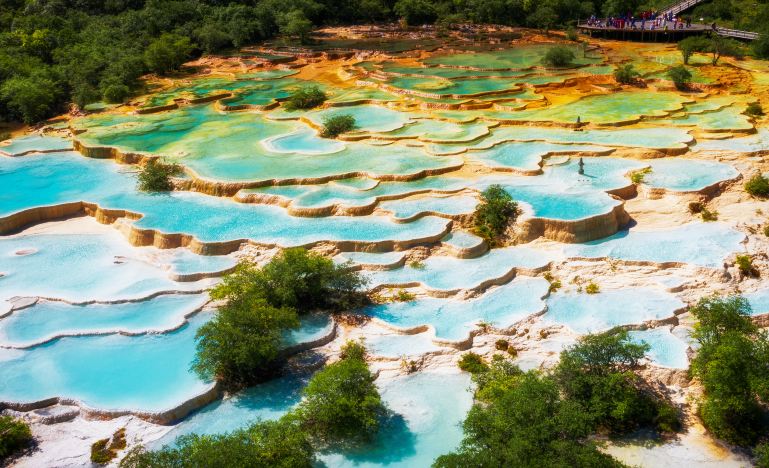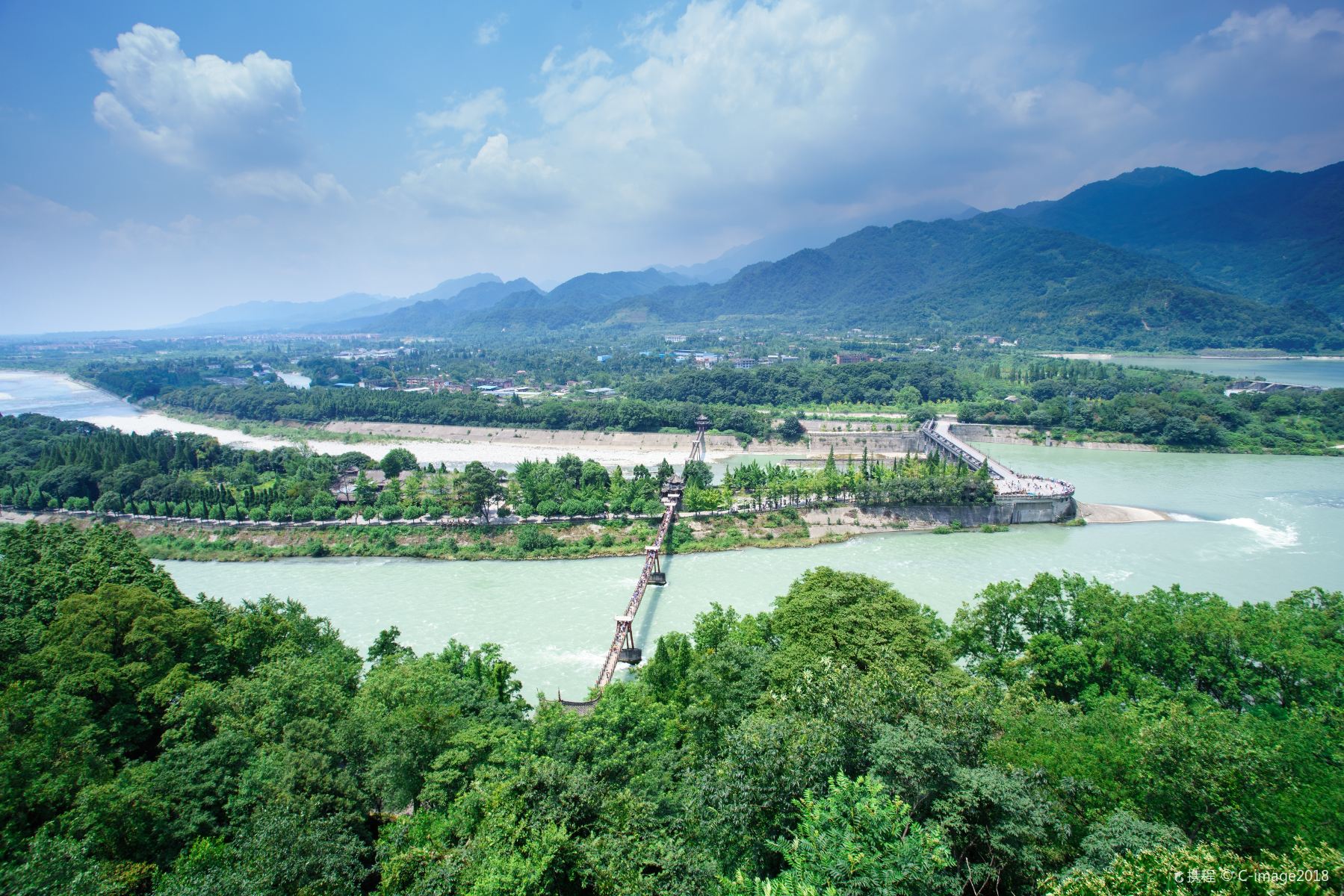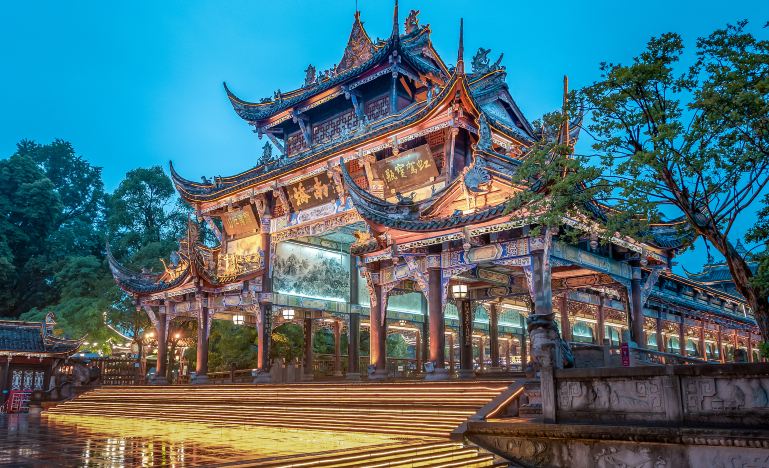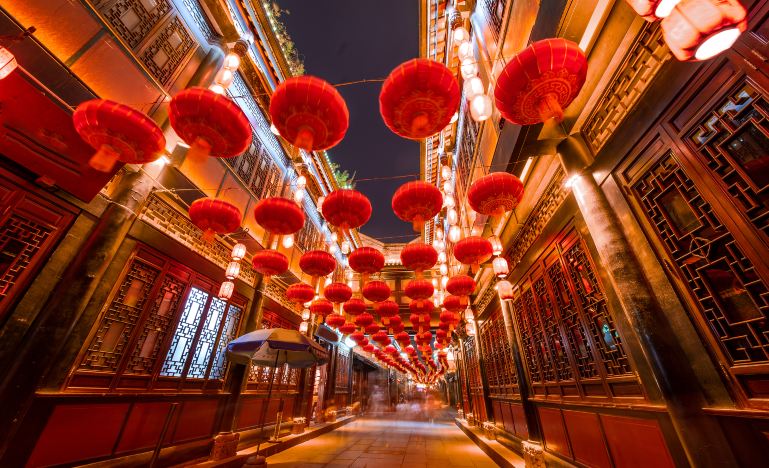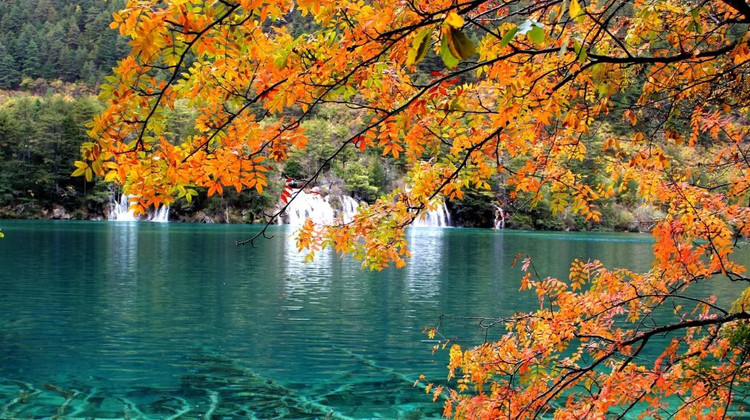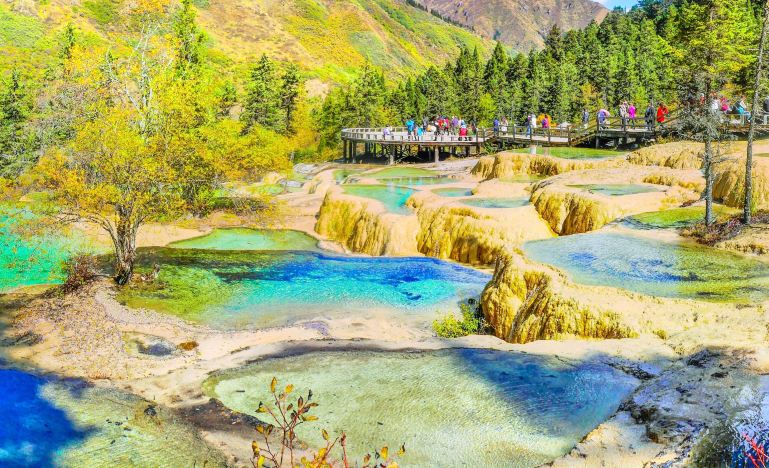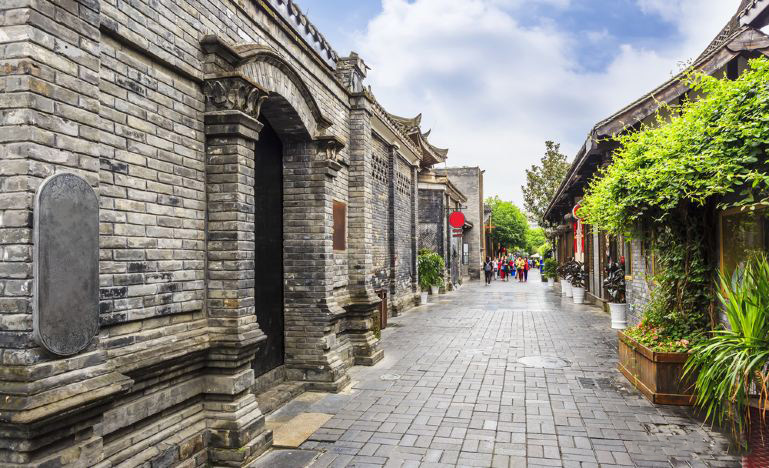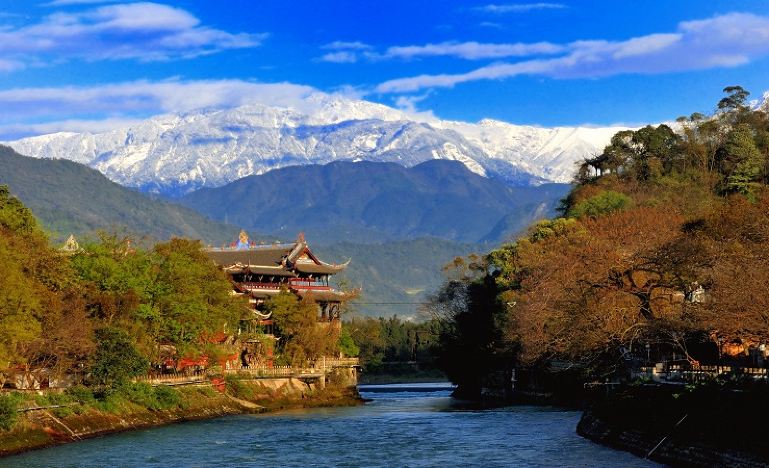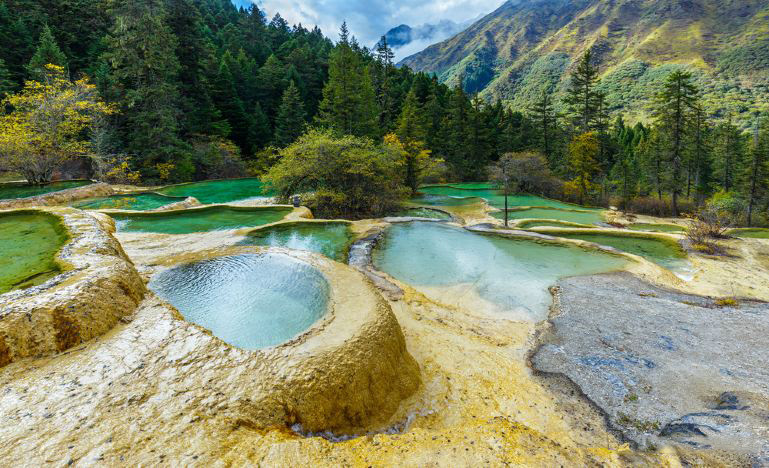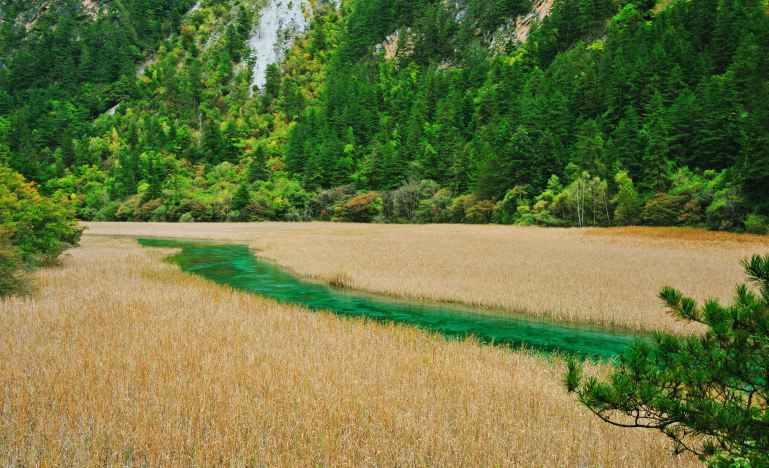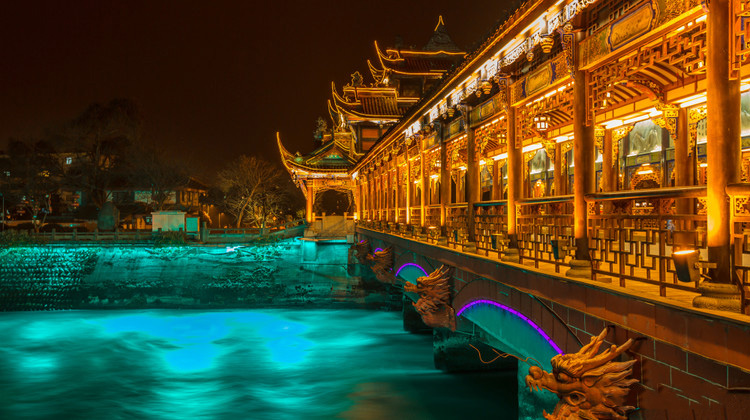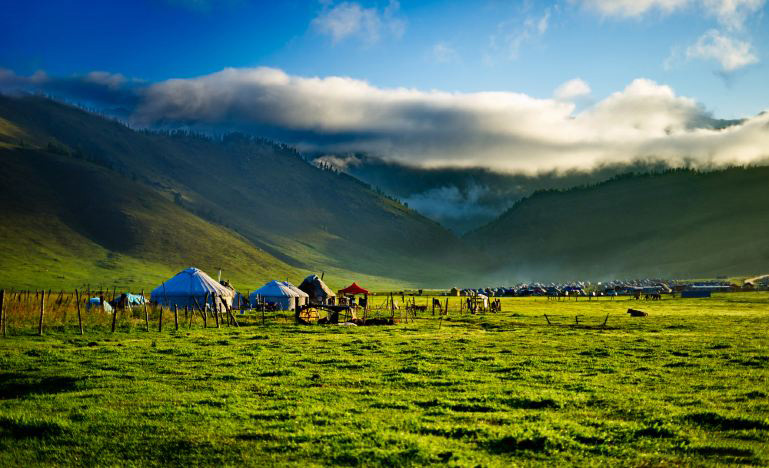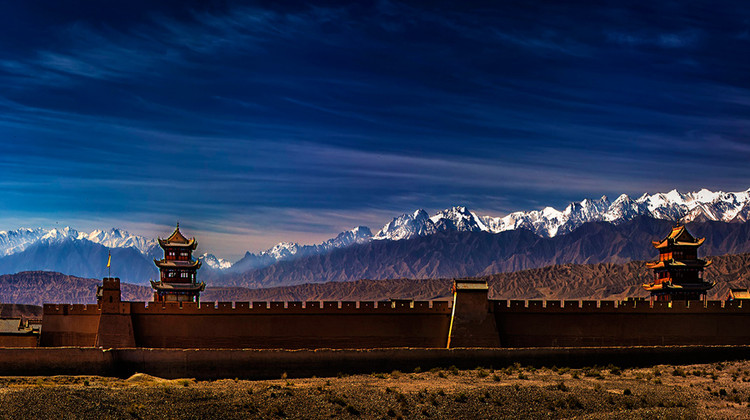Jiuzhaigou + Dujiangyan + Four Girls Mountain + Sanxingdui Museum + Chengdu Research Base of Giant Panda Breeding 7-Day 6-Night Trip
★ [Colorful Attractions] 🏝 Experience the perfect blend of nature and culture by visiting 3 major 5A scenic spots and 3 popular 4A attractions. Skip the less impressive sights and spend 5 full days immersed in the breathtaking beauty of Western Sichuan, delving deep into the splendid ancient Shu civilization that dates back three thousand years and listening to the wisdom of the ancients.
🌈 Explore the World Natural Heritage site of Jiuzhaigou, marvel at the World Cultural Heritage of Dujiangyan, climb the “Oriental Alps” Four Girls Mountain, discover the ancient Shu treasure at the Sanxingdui Museum, and enjoy the adorable national treasure pandas at the Giant Panda Breeding Base.
Note:
- The itinerary includes areas with high altitudes; those with heart and lung issues should proceed with caution.
- Western Sichuan is a gathering place for ethnic minorities; it is essential to respect the cultures of ethnic minorities.
Itinerary
Chengdu is the capital city of the Chinese province of Sichuan. With a population of 20,937,757 at the 2020 census, it is the fourth most populous city in China, and it is the only city with a population of over 20 million apart from direct-administered municipalities. It is traditionally the hub of Western China.
Chengdu is in central Sichuan. The surrounding Chengdu Plain is known as the “Country of Heaven” and the “Land of Abundance.” Its prehistoric settlers included the Sanxingdui culture. The site of Dujiangyan, an ancient irrigation system, is designated as a World Heritage Site. The Jin River flows through the city. Chengdu’s culture largely reflects that of its province, Sichuan; in 2011, it was recognized by UNESCO as a city of gastronomy. It is associated with the giant panda, a Chinese national symbol, which inhabits the area of Sichuan; the city is home to the Chengdu Research Base of Giant Panda Breeding.
The Dujiangyan (Chinese: 都江堰; pinyin: Dūjiāngyàn) is an ancient irrigation system in Dujiangyan City, Sichuan, China. Originally constructed around 256 BC by the State of Qin as an irrigation and flood control project, it is still in use today. The system’s infrastructure develops on the Min River (Minjiang), the longest tributary of the Yangtze. The area is in the west part of the Chengdu Plain, between the Sichuan Basin and the Tibetan Plateau. Originally, the Min would rush down from the Min Mountains and slow down abruptly after reaching the Chengdu Plain, filling the watercourse with silt, thus making the nearby areas extremely prone to floods. King Zhao of Qin commissioned the project, and the construction of the Dujiangyan harnessed the river using a new method of channeling and dividing the water rather than simply damming it. The water management scheme is still in use today to irrigate over 5,300 km2 (2,000 sq mi) of land in the region[1] and has produced comprehensive benefits in flood control, irrigation, water transport and general water consumption. Begun over 2,250 years ago, it now irrigates 668,700 hectares of farmland. The Dujiangyan, the Zhengguo Canal in Shaanxi and the Lingqu Canal in Guangxi are collectively known as the “three great hydraulic engineering projects of the Qin.”
Dujiangyan Irrigation System were inscribed on the World Heritage List in 2000. It has also been declared a State Priority Protected Site, among the first batch of National Scenic Areas and Historical Sites, and a National ISO14000 Demonstration Area.
zhaigou ([tɕjòʊ.ʈʂâɪ.kóʊ] ⓘ; Chinese: 九寨沟; pinyin: Jiǔzhàigōu) is a nature reserve and national park located in the north of Sichuan Province in southwestern China.The southern end is the Minshan Garna Peak, and the northern end is the Huanglong Scenic Area. It originates from the Baishui River area, one of the headwaters of the Jialing River and a part of the Yangtze River system. A long valley running north to south, Jiuzhaigou was inscribed by UNESCO as a World Heritage Site in 1992 and a World Biosphere Reserve in 1997. It belongs to the category V (Protected Landscape) in the IUCN system of protected area categorization.
The Jiuzhaigou valley is part of the Min Mountains on the edge of the Tibetan Plateau and stretches over 72,000 hectares (180,000 acres). It has an altitude of over 4800 meters and is composed of a series of diverse forest ecosystems.It is known for its many multi-level waterfalls, colorful lakes, and snow-capped peaks. Its elevation ranges from 2,000 to 4,500 metres (6,600 to 14,800 ft).
Huanglong (simplified Chinese: 黄龙; traditional Chinese: 黃龍; pinyin: Huánglóng; lit. ‘yellow dragon’) is a scenic and historic interest area in the northwest part of Sichuan, China. It is located in the southern part of the Minshan mountain range, 370 kilometres (230 mi) north-northwest of the capital Chengdu. This area is known for its colorful travertine pools formed by calcite deposits, especially in Huanglonggou (Yellow Dragon Gully), as well as diverse forest ecosystems, snow-capped peaks, waterfalls and hot springs. Huanglong is also home to many endangered species including the giant panda and the Sichuan golden snub-nosed monkey. In addition, a large population of the endemic orchid species ‘Cypripedium plectrochilum’ was discovered at the site Huanglong was declared a World Heritage Site by UNESCO in 1992 because of its outstanding travertine formations, waterfalls and limestone formations as well as its travertine terraces and lakes rating among the three most outstanding examples in the world.
Mount Siguniang (Chinese: 四姑娘山; pinyin: Sìgūniang Shān; lit. ‘Mountain of the Four Maidens’), or Mount Skubla (Tibetan: རི་བོ་སྐུ་བླ་, Wylie: ri bo sku bla, lit. ‘Mountain of the tutelary deity’) is the highest mountain of Qionglai Mountains in Western China. It is located in the bordering area of Siguniangshan Town, Xiaojin County and Wenchuan County in Ngawa Tibetan and Qiang Autonomous Prefecture, Sichuan Province.
Mount Siguniang is renowned for its beauty. Mount Siguniang National Park was identified as a UNESCO Heritage Site as part of Sichuan Giant Panda Sanctuaries in 2006. The park comprises Mount Siguniang and the surrounding three valleys, namely Changping Valley (长坪沟), Haizi Valley (海子沟) and Shuangqiao Valley (双桥沟), covering an area of 2,000sq km.
Tips:The itinerary will pass through the core area of the 2008 Wenchuan earthquake
The Chengdu Research Base of Giant Panda Breeding (or simply Chengdu Panda Base) is a public non-profit breeding and research institute for giant pandas, red pandas, and other rare animals, located in Chengdu, Sichuan, China.
Chengdu Panda Base was founded in 1987 by the Chengdu Municipal People’s Government. It started with 6 giant pandas that were rescued from the wild. By 2008, it had 124 panda births, and the captive panda population has grown to 83.
Its stated goal is to “be a world-class research facility, conservation education center, and international educational tourism destination.”
Chengdu, as the capital of Sichuan Province, is the cultural and culinary center of Western China. On the last day, you can fully savor the flavors of Sichuan cuisine. Chengdu’s cuisine is famous for its numbing spiciness, fragrant heat, and delicious taste. Here is a summary of some Chengdu delicacies:
1. Hot Pot: Chengdu hot pot is known for its numbing spiciness and fresh fragrance. It is a classic representative of Sichuan cuisine, usually using beef tallow as the base, paired with various meats, seafood, and vegetables.
2. Skewers: A street snack where various ingredients are threaded on bamboo sticks, cooked, and then dipped in a specially made chili sauce.
3. Dan Dan Noodles: A traditional Sichuan snack, famous for its spicy and numbing taste and unique peanut or sesame sauce seasoning.
4. Wontons in Chili Oil: Similar to wontons from other places, but Chengdu’s wontons are known for their thin skin, large filling, and delicious soup base.
5. Couple’s Lung Slices: A cold dish mainly made from beef and beef offal, with a specially made spicy and numbing sauce.
6. Mapo Tofu: The main ingredients are tofu and minced beef, with Sichuan peppercorns and chili peppers added, making it spicy and numbing and widely loved.
7. Kung Pao Chicken: A classic Sichuan dish made with chicken, peanuts, and chili peppers, with a fresh and slightly spicy taste.
8. Sweet Noodles: A type of sweet noodle, usually with brown sugar and sesame paste, a traditional snack from Chengdu.
9. Rabbit Head: A specialty snack from Chengdu, the rabbit head is boiled and then marinated with spicy and numbing seasonings, with a delicious taste.
10. Fat Intestine Rice Noodles: Made mainly from sweet potato flour, with fat intestines and a spicy soup base, it is a very popular breakfast in Chengdu.
11. Baked Bread: A type of baked pasta with a crispy skin and soft inside, which can be paired with various meats or vegetables.
12. Three Cannons: A dessert made of glutinous rice, named for the sound it makes during the production process.
FAQs
A: Constructed around 256 BC by the State of Qin as an irrigation and flood control project, it is still in use today and irrigates over 5,300 km² of land in the region. It is also one of the “three great hydraulic engineering projects of the Qin”.
A: In popular tourist destinations like the Chengdu Research Base of Giant Panda Breeding and Dujiangyan, it is possible to find English-speaking tour guides. You can inquire at the tourist centers.
A: It is a public non-profit breeding and research institute for giant pandas, red pandas, and other rare animals located in Chengdu.
A:For 144hour-free-visa, you can refer this post 144-hour-Visa-Free Transit policies for Foreign Nationals – A Complete Guide in 2024 – ChinaTravelTips (china-travel-tips.com)

